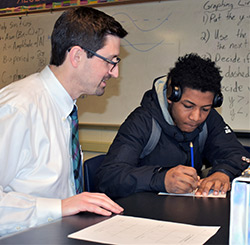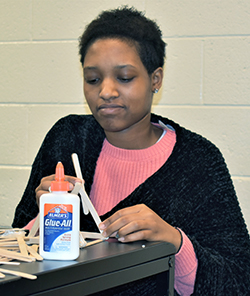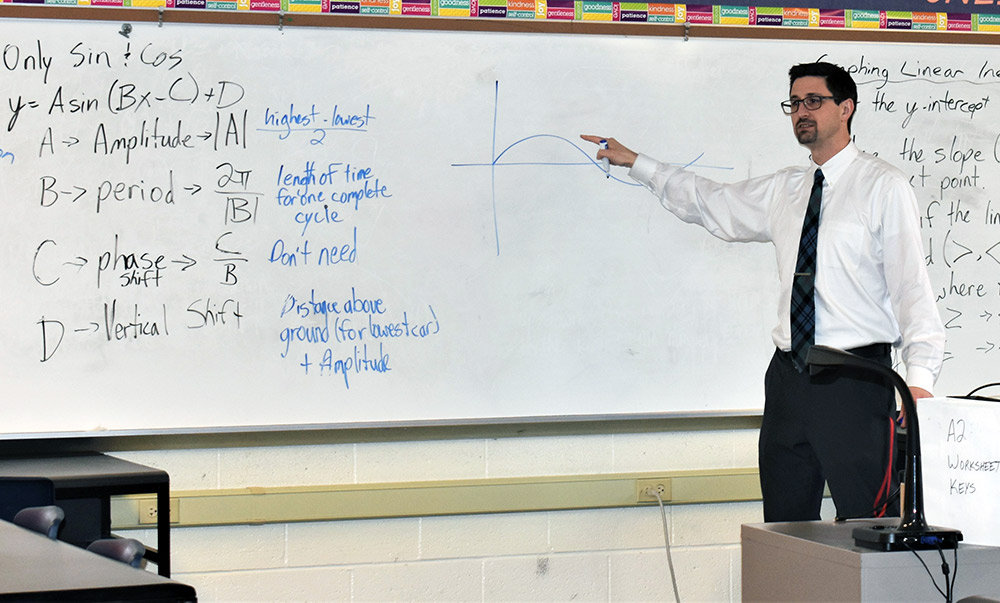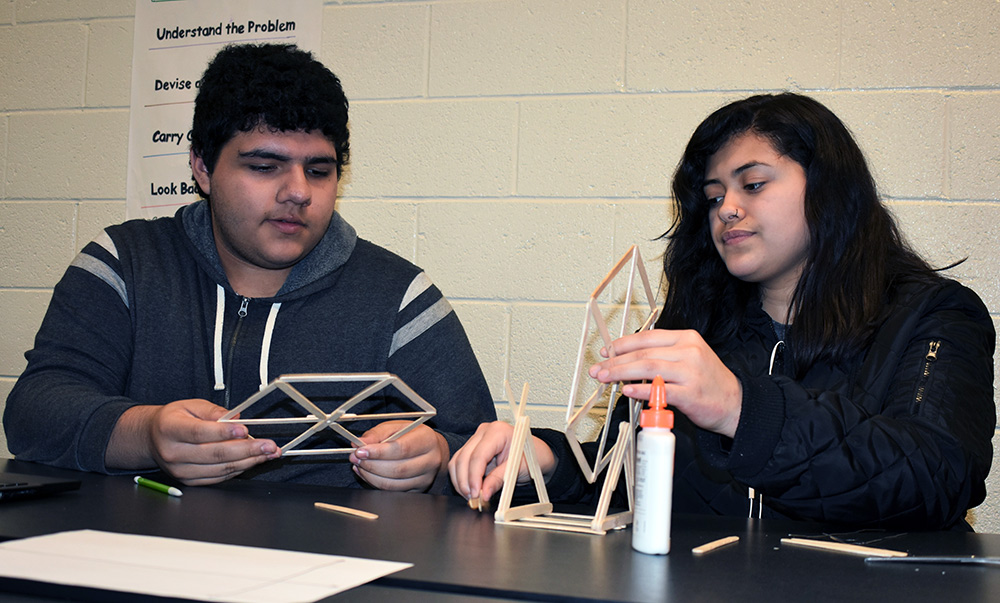As his students trickled into his Algebra 2 class, Rick Jackson stood in the middle of the room, greeting them and every now and then spinning a popsicle-stick Ferris wheel he held in his left hand.
Once students were seated and settled in, Jackson put the Ferris wheel down and began calling out a series of questions. His queries covered things like Sine functions and Sine graphs, each question with a specific purpose. Based on student answers, it was clear learning was taking place. At one point, Jackson pulled up a YouTube video of a Ferris wheel in action to help them estimate how long it might take for popsicle-stick Ferris wheels they would construct to make a revolution.

“Let’s use this video,” he said. “How fast do you think would be too fast?”
“One second,” said one student.
Jackson laughed. “Right,” he said. “One second. That would be too fast. Even the Zipper isn’t that fast. I don’t think any ride is one second.” He continued: “What would be too slow?”
“Fifteen minutes,” called out another student.
Jackson laughed again. “Yes,” he said with a smile. “The park wouldn’t make much money if the Ferris wheel took 15 minutes. So, you’ll be able to use your critical thinking and come up with what seems like a reasonable time estimate for your wheel.”
After 15 minutes or so of teaching and conversation, Jackson set the students loose on the popsicle sticks, glue, tape and more at their desks and they began to build.

‘Trigonometry is a Very Practical Math’
As they worked, Jackson moved around the room, answering questions but also kibitzing and having fun with his 20 charges.
Later he reflected on the assignment and what he hopes to accomplish in this first year of the fragile Ferris wheels project.
“I stumbled across the idea searching the internet for trig projects,” he said. “I took what I found and modified it to fit the needs of my class, essentially by focusing on the hands-on part up front. This led to engagement from the class, which then allows for richer discussions of the math.”
The hands-on part of the process, Jackson added, is not to be overlooked from a teaching perspective.
“Working with a model that they have developed themselves, students gain a more concrete idea of how motion of a Ferris wheel can be tied to a Sine function and a Sine graph. Working from concrete to abstract, I hope, will be more beneficial than just talking in the abstract. I also hope that the students start to see some concrete connections between real-life occurrences and mathematics in general. Trigonometry is a very practical math.”
His students resonated with his remarks.
Creativity and Collaboration
Senior Sonia Olvera said she enjoyed the project for its collaborative nature. “I don’t like working by myself as much. It’s nice that we can be with a partner.”
Her partner, senior Manuel Mendoza, nodded as Sonia spoke. “I like the creativeness of it too,” he said. “We get to design it how we want it.”
He also liked the ways the project and the mathematical concepts were coming together.
“It makes sense to me,” he said.
Across the room, juniors Dominic Russell and Quaa Doxie were also working together on their wheel.
“I’ve been on a Ferris wheel,” said Dominic, “so I know what it looks like and how it feels. This is fun, to work on this. Yeah, it connects to the math. I feel like I am learning some things.”
Quaa concurred for slightly different reasons.
“I’ve never been on a Ferris wheel,” she said. “So now I can build something I’ve never been on before. The math part isn’t too hard, but I feel like I’m pretty good at math.”
Jackson said he is committed to bringing even more projects to his math classroom.
“My experience with this type of project shows that students respond very well to hands-on activities,” he said. “Really, better than any other type of activity. As such, I continue to try to find more projects to bring to them. My eventual goal is projects to cover the entire curriculum, but they take time to think of, or find, and then to develop.”
CONNECT
Resources for the Classroom from Teachers Pay Teachers
Resources for the Classroom from MathShell











